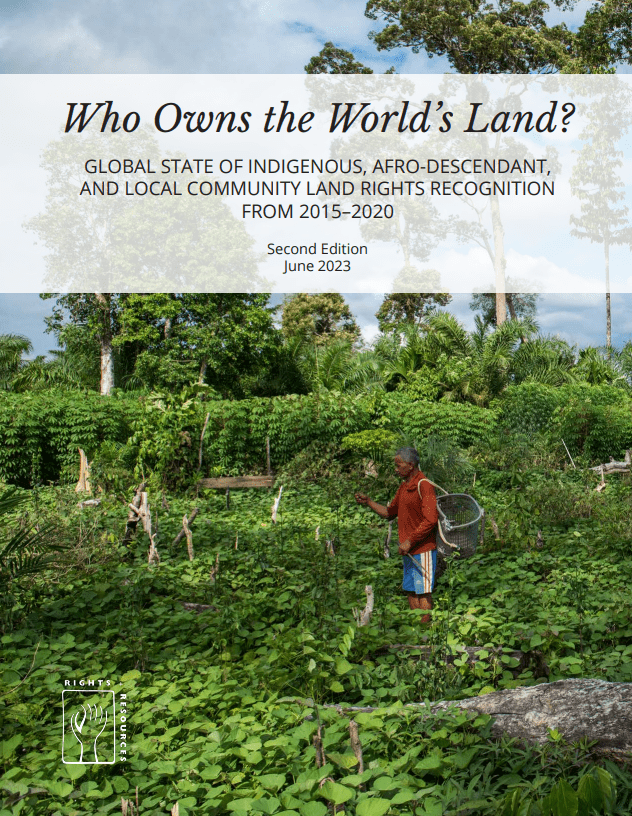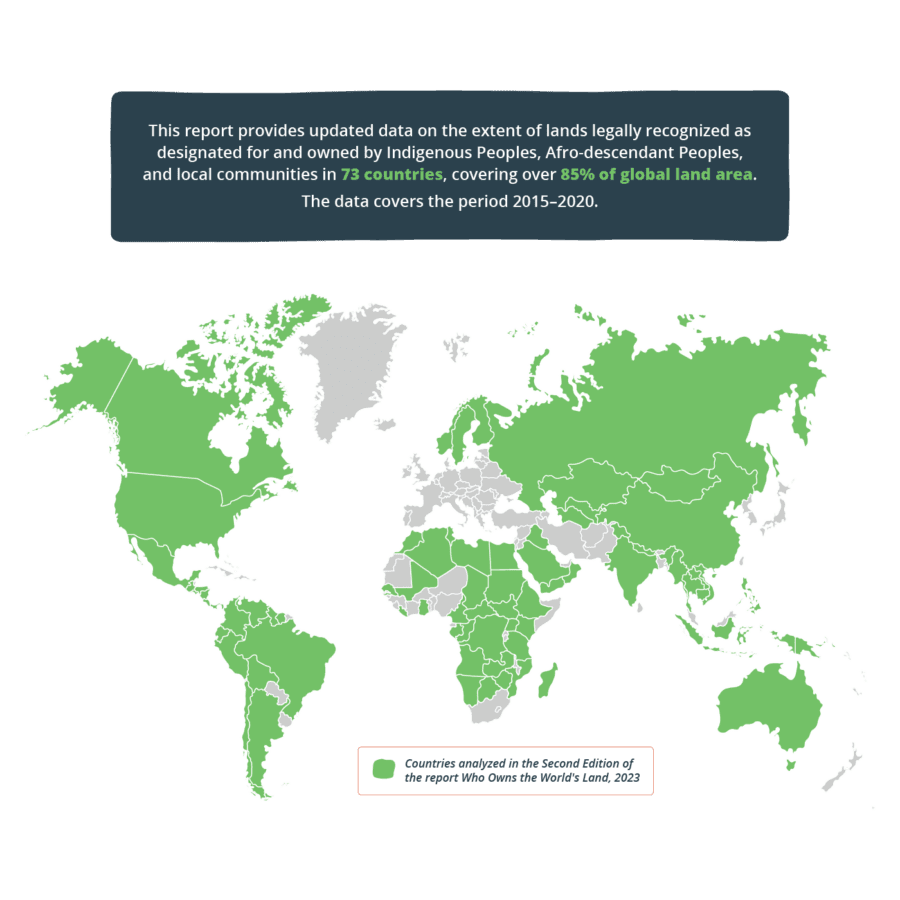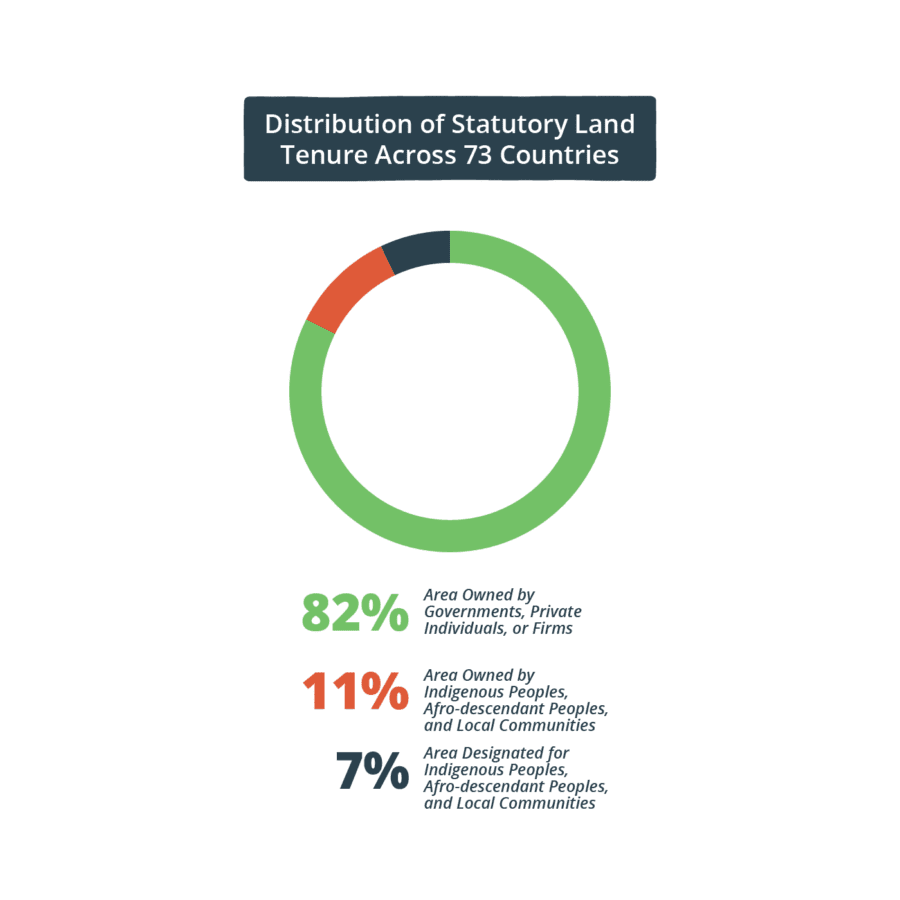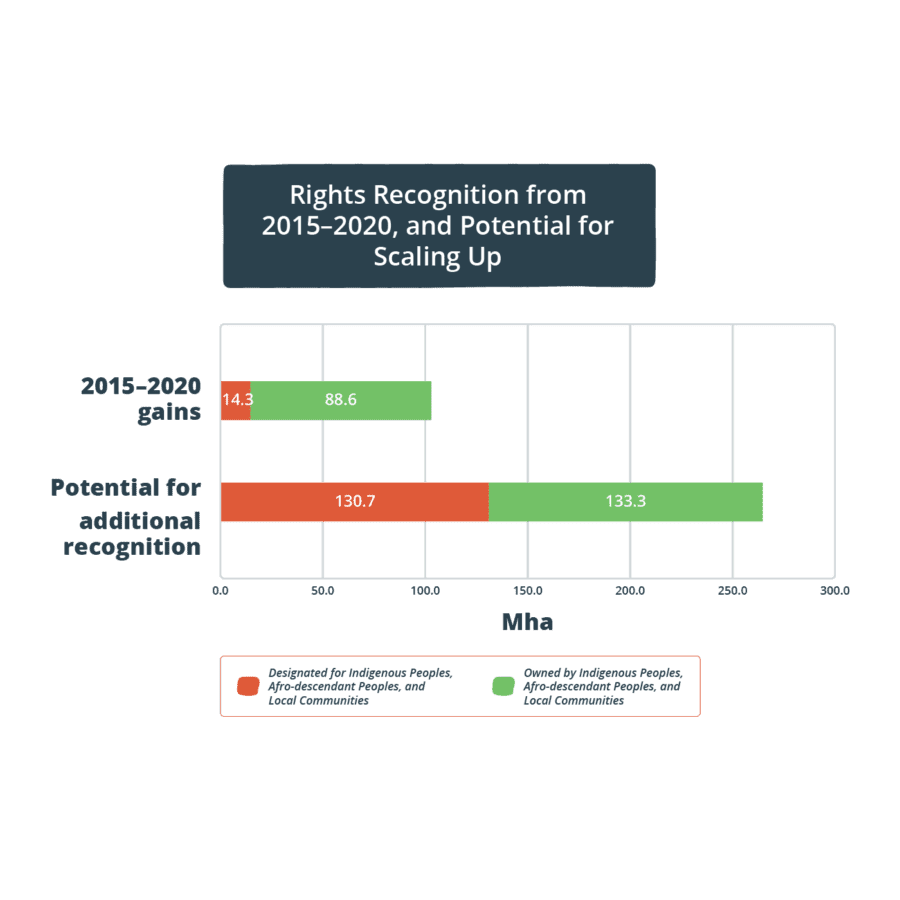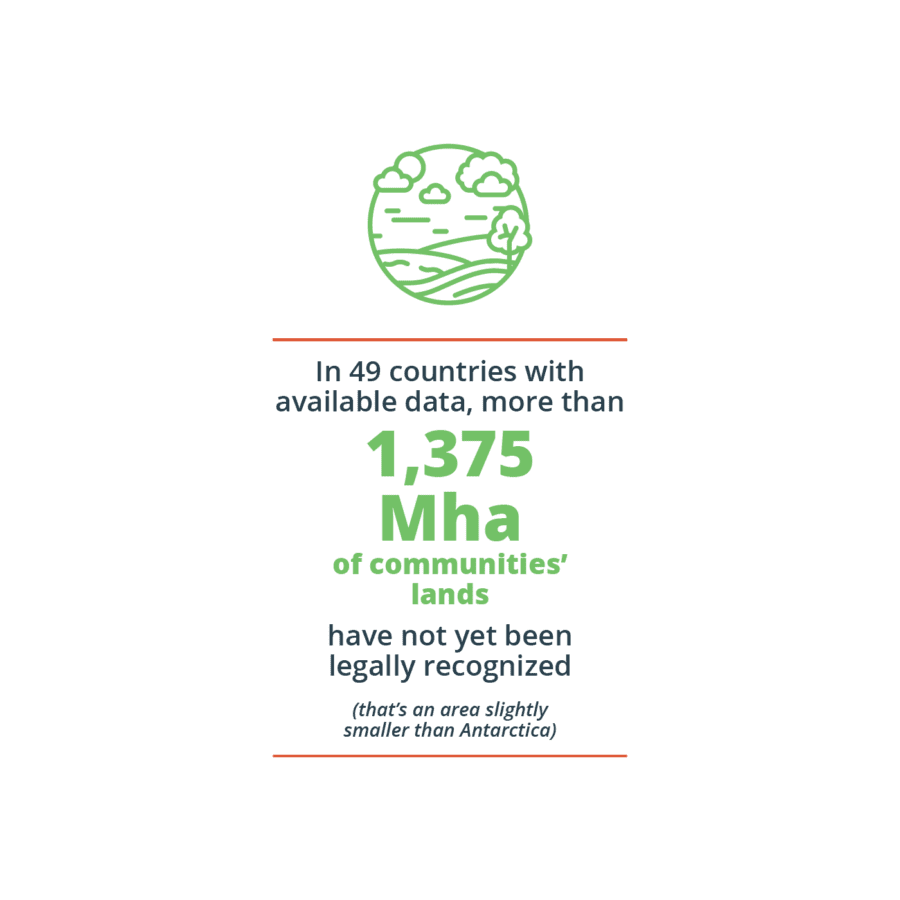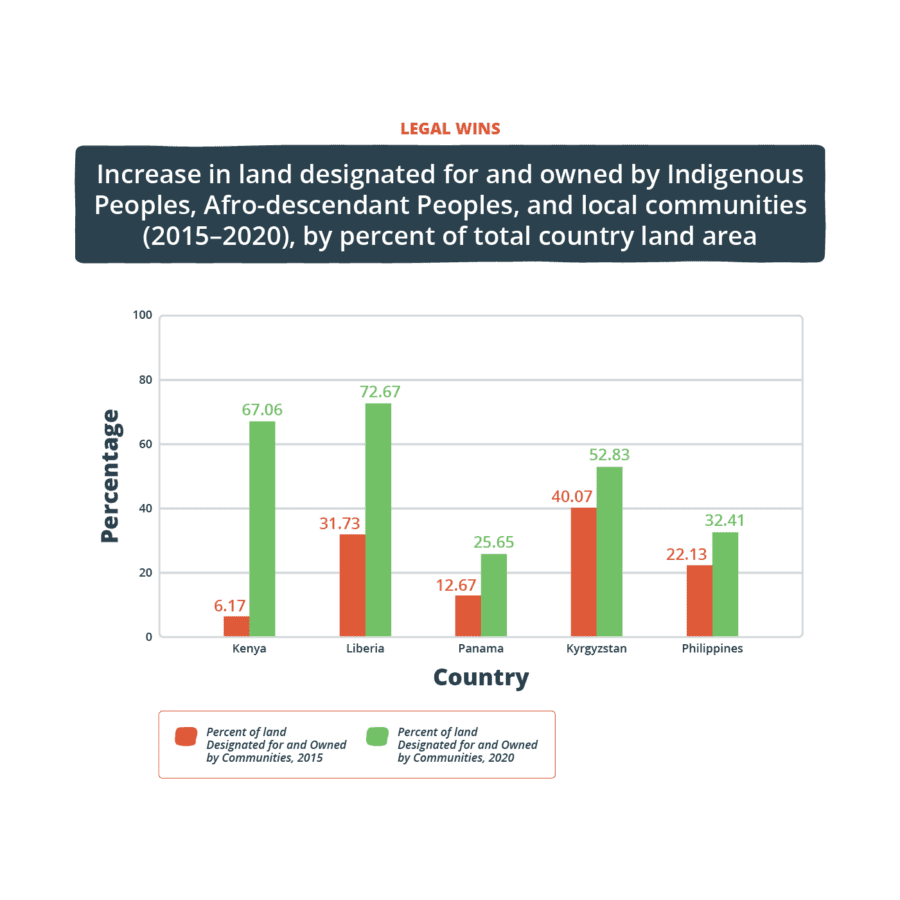Date: June 15, 2023
Since we published the first edition of Who Owns the World’s Land? in 2015, global acknowledgment of the importance of legally recognizing and securing the community-based land and resource tenure rights of the world’s 2.5 billion Indigenous Peoples, Afro-descendant Peoples, and local communities has reached unprecedented heights. Following decades of national and international advocacy by rightsholders and their allies, land tenure security for both communities and community women is now recognized as an integral component of the 2030 Agenda, without which the Sustainable Development Goals (SDGs), the Kunming-Montréal Global Biodiversity Framework, and the Paris Agreement objectives cannot be achieved. Moreover, mounting evidence concludes what Indigenous Peoples, Afro-descendant Peoples, and local communities have long maintained—that they are the best managers of their lands and resources.
This second edition of Who Owns the World’s Land? reports on progress over the first five years (2015–2020) of the SDGs, the Paris Agreement, and the Land Rights Now target to double the area of community-owned land by providing updated data on the extent of lands legally recognized as designed for and owned by Indigenous Peoples and local communities in 73 countries covering 85% of global lands. It also revisits and expands upon estimates of the land area that Indigenous, Afro-descendant, and local communities traditionally hold and use, but to which their rights are not yet legally recognized by national governments.
https://doi.org/10.53892/MHZN6595

